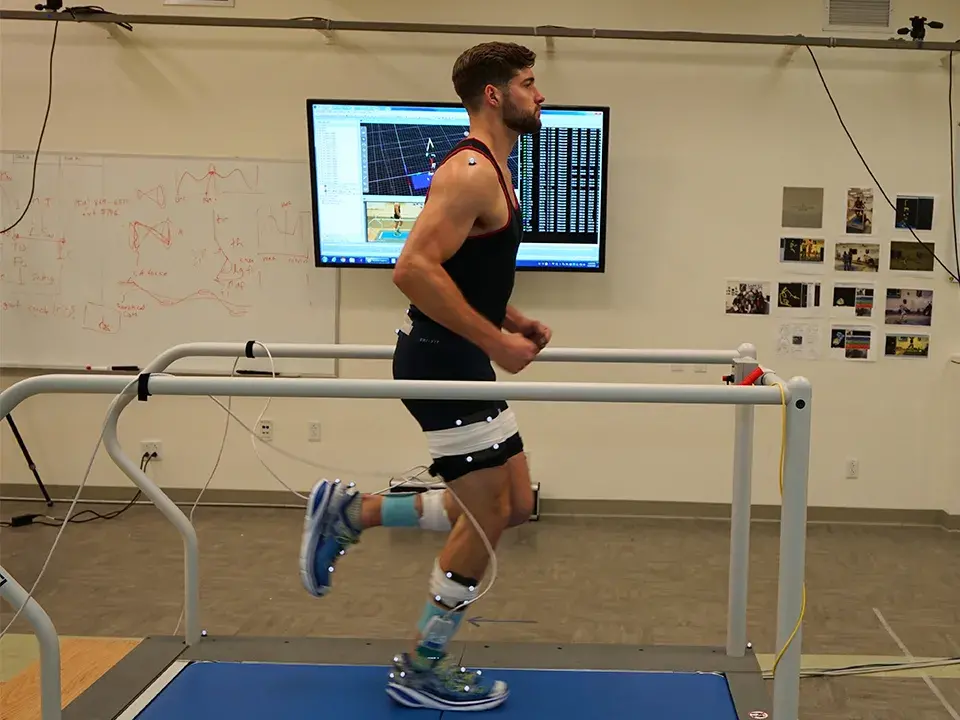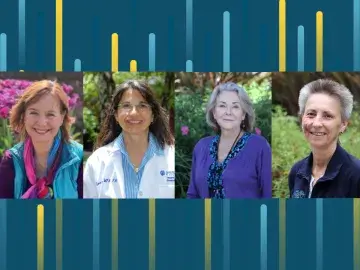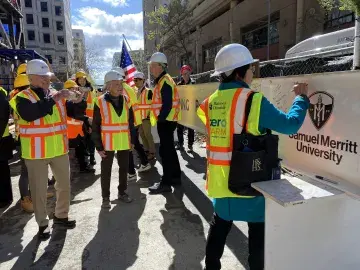Motion Analysis Research is Accelerating

Several major research initiatives are underway at SMU’s Motion Analysis Research Center (MARC) to advance the scholarship of human movement.
Using the MARC’s sophisticated biomechanical equipment, student and faculty researchers are engaged in a variety of studies related to the functioning of joints and muscles among physically active people.
In one study led by Cherri Choate, DPM, assistant professor at the California School of Podiatric Medicine (CSPM), and Stephen Hill, PhD, manager of the MARC, student researchers are looking at whether people perform differently wearing so-called “maximalist” athletic shoes with thick cushioning and a deeper footbed than in a shoe with more neutral cushioning.
“It’s something new that students are interested in,” said Choate.
The maximalist shoe is the most recent innovation in running shoes. It comes on the heels of the minimalist trend a few years ago when runners slipped into ultra-flexible shoes that looked more like gloves, allowing them to feel the road as if they were barefoot. With no cushion to absorb the impact, the minimalist trend led to a jump in reported injuries.
“Now the pendulum has swung the other way and people are looking for ways of protecting themselves,” said Hill.
The maximalist shoe study required that participants be in good health and run at least 10 miles per week. A large percentage of the subjects turned out to be current or former collegiate runners.
With the help of reflective markers placed on the bodies of study participants, the researchers tracked the impact of movement on each runner’s joints, the pressure on the soles of their feet, and how their feet and knees worked together while walking and running on a specialized treadmill in both maximalist shoes and average running shoes.
Although the data is still being analyzed, Choate said preliminary findings show that people wearing the super-cushioned shoe struck the ground harder than those wearing the more neutral shoe.
The MARC is one of the nation’s only multi-disciplinary research laboratories designed for students and faculty to collaborate on clinical biomechanics research related to human motion. Since 2013, it has been serving as a teaching center on motion analysis for CSPM and SMU’s Doctor of Occupational Therapy and Doctor of Physical Therapy programs.
Students and faculty members use the center to study biomechanics, gait, upper and lower body movement as well as the effect of treatment modalities so they can apply what they learn for the benefit of patients.
“I am gratified to see more SMU faculty using the MARC for research as well as teaching,” said MARC Director Drew Smith, PhD. “Our new cutting-edge technology is being put to excellent use in helping us more fully understand the dynamics of muscle strength and joint movement.”
Other ongoing MARC research includes a study into whether the use of orthotics is sufficient enough to reduce the high incidence of non-contact anterior cruciate ligament injuries of the knee among women engaged in sports.
Led by Hill and CSPM Assistant Professor Tim Dutra, DPM, the study is investigating whether custom-made orthotics stabilize the foot and reduce the internal rotation of the tibia so there is less rotation of the knee joint. The researchers are measuring the joint movement of 30 participants — all healthy women who run at least 10 miles per week — as they walk and jog on floor-mounted force platforms.
The focus on women is due to their higher risk of injury and because there is a lack of biomechanics research among women athletes.
Hill said while research in the MARC can be part of the curriculum for occupational therapy students, it is voluntary for CSPM students.
“Podiatric medicine students are genuinely excited to gain hands-on experience by performing clinical research,” he said. “It enhances their ability to incorporate evidence-based care and technology in their clinical practice, and prepares them to be better candidates for residencies.”
This article appeared in the 2018 Report to the Community. Click here to view the entire annual report.


